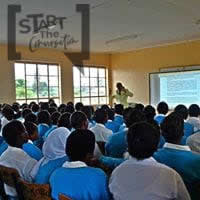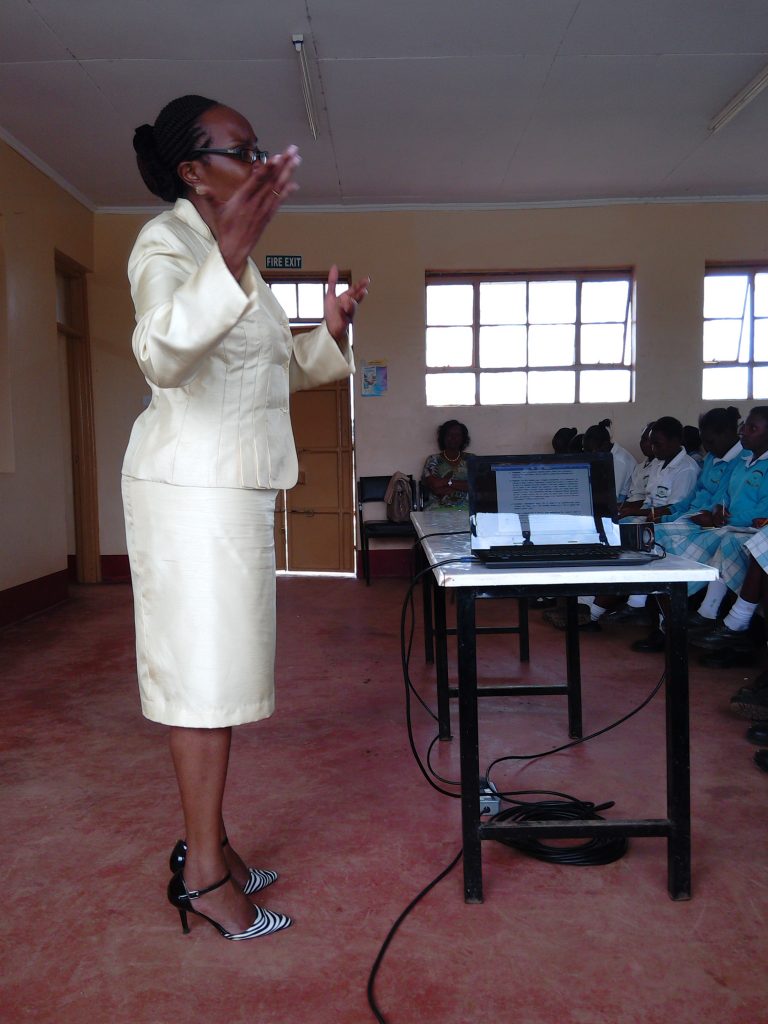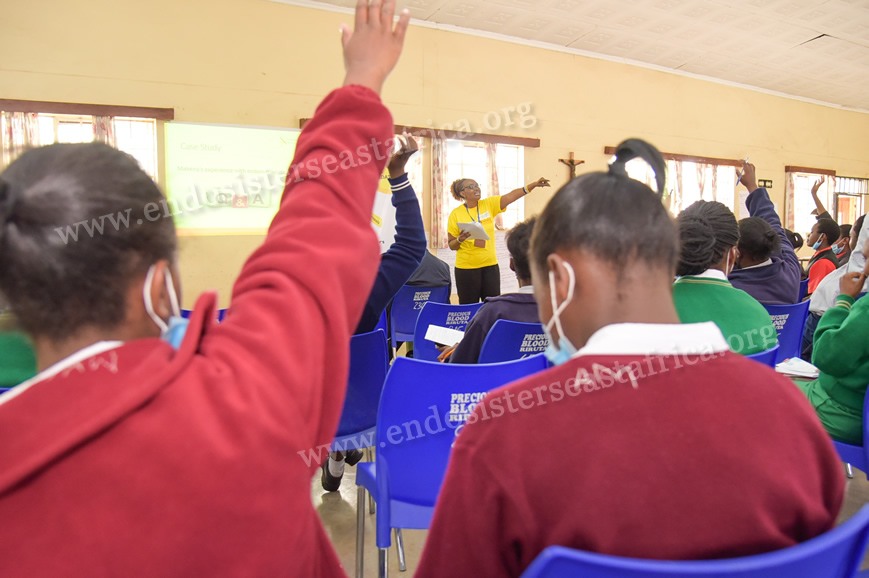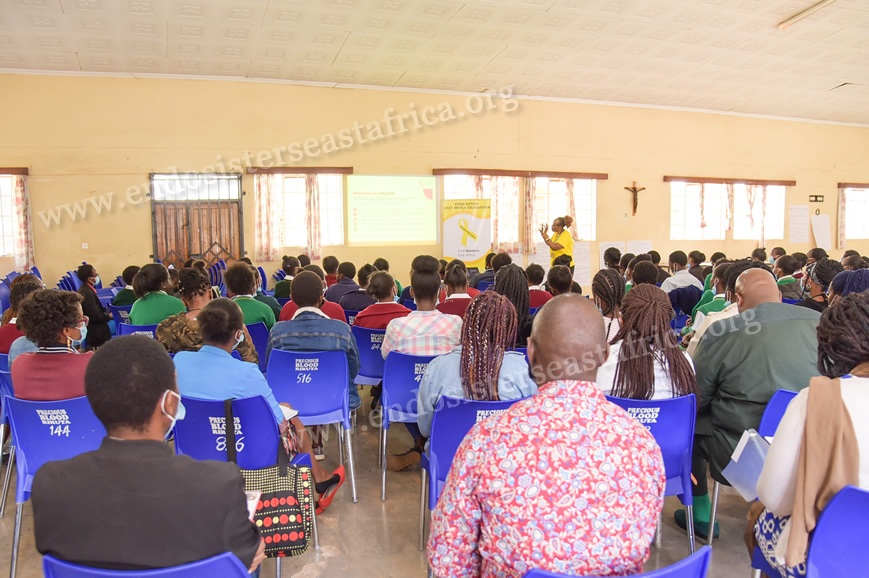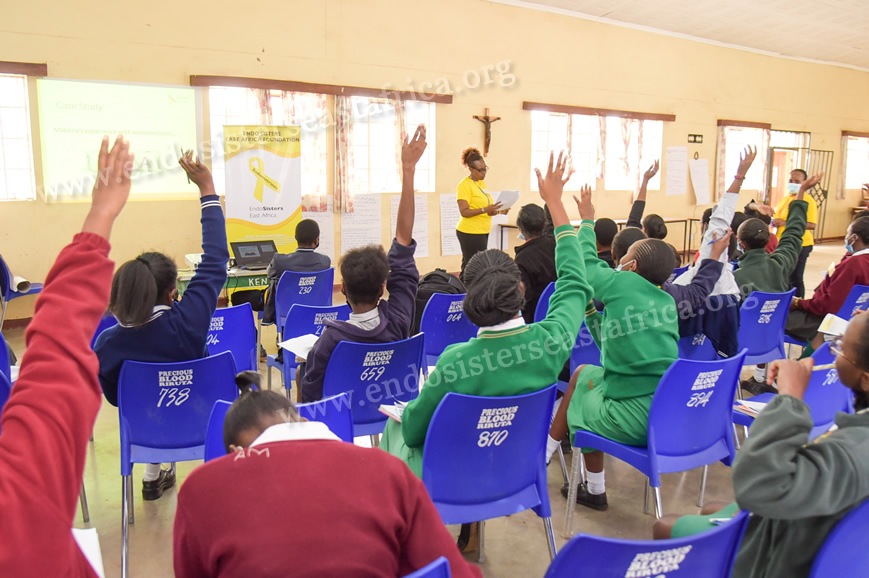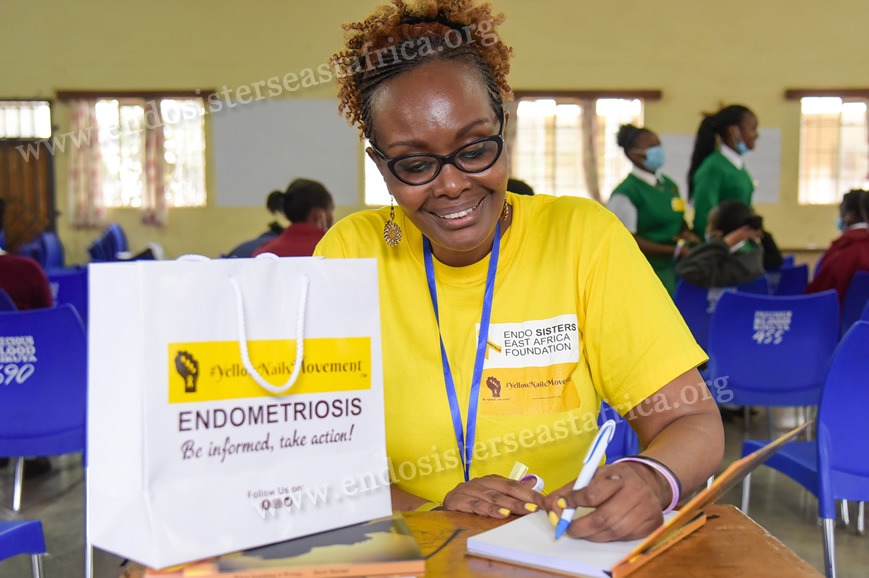Adolescence (Teens & Young Adults) is the transitional years of growth from puberty to adulthood and is an exciting though emotionally and stressful time marked with a lot of physical, psychological and social changes. Most girls look forward to this transformational period in their lives, but sadly a number end up being traumatized by how painful the puberty process is. Indeed, it is true that not every girl will find this process physically painful, but one cannot understate the importance of psychologically preparing girls for this transitional time in their lives so that they are better placed to take responsibility for their health. The genesis of women empowerment begins by empowering young girls to understand the changes going on in their bodies, question, and raise concerns when they discern that something may be wrong without fear of shame or condemnation.
While there are no universally accepted definitions of adolescence and youth, the United Nations understands adolescents to include persons aged 10-19 years and youth as those between 15- 24 years. For purposes of this article, we will collectively refer to adolescents as those between the ages of 10-24 years.
Menstrual Cramps
Menstruation is said to begin from 10 years of age with some girls starting their periods as early as 9 years old. During this time, it is possible that girls experience menstrual pain or dysmenorrhea. Dysmenorrhea according to the online medical dictionary is defined as the occurrence of painful cramps during menstruation. Dysmenorrhea can either be classified as primary or secondary. Primary dysmenorrhea occurs in the absence of any pelvic medical condition. The medical dictionary further states that in the first year or so of a girl’s periods, they are not usually very painful. However, once ovulation begins, the blood levels of prostaglandins rise, leading to stronger contractions and this is what is described as primary dysmenorrhea. Symptoms include cramping in the lower abdomen, nausea and vomiting, diarrhea, irritability, sweating or dizziness.
The medical dictionary details that Secondary dysmenorrhea is when the pain is caused by an underlying gynecological disorder or condition. Examples of such conditions are endometriosis, fibroid tumors, pelvic infection, adenomyosis and others. Secondary dysmenorrhea is managed by treating the underlying disorder and that is why it is so important to establish whether the cause of pain for the adolescent is as a result of primary or secondary dysmenorrhea. Specifically, Endometriosis has been found to be the most common cause of secondary dysmenorrhea amongst the adolescent population[i].
Understanding Endometriosis
Endometriosis is a highly damaging disease of the female reproductive system[ii]. When a woman has endometriosis, tissue that looks and acts like the lining of the uterus starts growing in places besides the inside of the uterus.The most common locations for these growths or implants are the outside surface of the uterus, Fallopian tubes, ovaries, intestines, bladder and pelvic cavity.[iii]. As a result, implants become inflamed resulting in symptoms.
Approximately one in ten women and 176 million women worldwide live with endometriosis. Endometriosis can cause daily pelvic pain, painful periods, and pain during bowel movements or sex[iv]. The challenge however is that Endometriosis symptoms can mimic those of other diseases, often leading to multiple misdiagnoses.
How do I help my teen/adolescent get diagnosed?
Endometriosis is not always diagnosed right away in teens because their doctors assume that their painful periods are a normal part of menstruating, or that their abdominal pain is due to another problem. However, excessive pain that limits activity isn’t normal and should always be taken seriously. The Endometriosis Foundation of America’s awareness campaign states that “Killer cramps” that result in girls missing multiple days of school, sports and social activities during and around the time of her period[v] are not normal. So, the first step is to take your daughter to a visit to the gynecologist once she starts menstruating particularly if she is complaining of pain. In addition to doing a physical exam, the doctor will take her medical history by asking her about any concerns and symptoms she has. It is important to have kept a pain and symptoms diary that details what she experienced at different times during her cycle so that it can inform the doctor’s course of action.

Diagnosis and Treatment options
Unfortunately, Laparoscopic surgery is the only sure way to determine if one has endometriosis though there are other methods such as ultra sound examination used for trying to diagnose endometriosis. There is no cure for endometriosis, but there are treatments available to manage the disease. Treatment options include pain killers for mild pain, hormone treatment (mostly in the form of birth control pills), Laparoscopic excision surgery (the best choice for extensive endometriosis), diet management, exercise and other alternative therapies[vi]. Emotional support for those struggling with endometriosis can be obtained at the following link https://www.facebook.com/endosisterseastafrica/
Endometriosis and Fertility
While we do not have data on endometriosis in East Africa, Endometriosis is the third leading cause of gynecologic hospitalization in the United States and impacts both a woman’s physical and mental well-being[vii]. Studies show that 30-50% of women who have endometriosis may experience some infertility[viii]. This is because endometriosis can impair or block the fallopian tubes and decrease ovarian reserve, impending pregnancy. Endometriosis can also inflame the pelvic structures making it harder for fertilized eggs to implant. The extent of endometriosis will determine on how much it affects fertility. Endometriosis is an estrogen dependent disease, so the reduction of estrogen during pregnancy can alleviate the symptoms until the pregnancy and/or breastfeeding are concluded and then it resurfaces. More severe stages of endometriosis may impede pregnancy and require IVF treatment to become pregnant.
Who is at Risk?
Girls whose mothers or close family members have endometriosis are 5-7 times more likely to have endometriosis[ix]. The good news is that early treatment reduces chances of infertility[x] which is important since there is no cure for endometriosis[xi]. For best results, it is recommended that the diagnosis period of the disease does not extend beyond 5 years. This is for better management of the disease and for quality of life enhancement for afflicted women.
At Endo Sisters East Africa Foundation, we continue to actively create awareness among young girls and adolescents and influence the Education sector through the #EndoKit & #ENPOWR Endo Edukit program training on Endometriosis Awareness.

References
[i] Laufer MR, Goitein L, Bush M, Cramer DW, Emans SJ. Prevalence of endometriosis in adolescent girls with chronic pelvic pain not responding to conventional therapy. J Pediatr Adolesc Gynecol 1997;10:199–202.
[ii] Cramer, D., & Missmer, S. The Epidemiology of Endometriosis. Annals New York Academy of Sciences.
[iii] Patient Fact Sheet: Managing Pelvic Pain. (2008). Retrieved July 10, 2014, from http://www.asrm.org
[iv] Patient Fact Sheet: Managing Pelvic Pain. (2008). Retrieved July 10, 2014, from http://www.asrm.org
[v]Nurse Conference 2013 – Monique Regard, MD – Video Gallery – Endometriosis Foundation of America. (n.d.). Endofound. Retrieved July 10, 2014, from http://www.endofound.org/video/Nurse-Conference-2013-Monique-Regard-MD-/408
[vi] Mcleod, B., & Retzloff, M. Epidemiology of Endometriosis: An Assessment of Risk Factors. Clinical Obstetrics and Gynecology, 53.2, 389-396
[vii] Mcleod, B., & Retzloff, M. Epidemiology of Endometriosis: An Assessment of Risk Factors. Clinical Obstetrics and Gynecology, 53.2, 389-396
[viii] Endometriosis: Does it Cause Infertility? (2008). Retrieved July 10, 2014, from http://www.asrm.org
[ix] Patient Fact Sheet: Managing Pelvic Pain. (2008). Retrieved July 10, 2014, from http://www.asrm.org
[x] Endometriosis: A Guide for Patients. (2008). Retrieved July 10, 2014, from http://www.asrm.org
[xi] Endometriosis. Retrieved July 10, 2014, from http://www.endofound.org/

